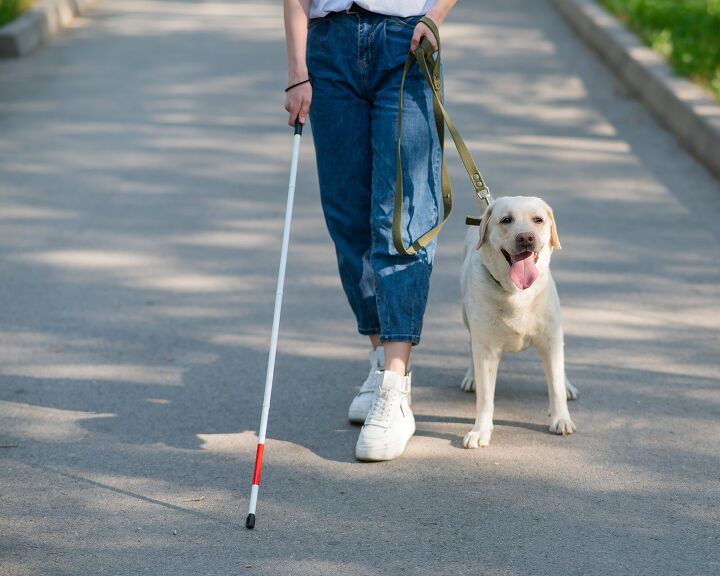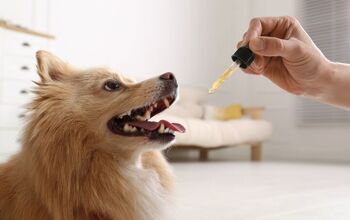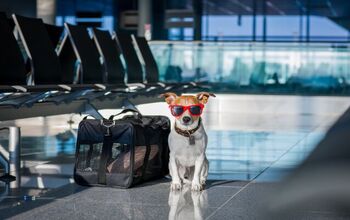A New Four-Legged Robot May Soon Replace Guide Dogs

Robots aren’t only taking human jobs! Our four-legged colleagues may soon need new jobs because there’s a new AI-powered robot guide dog in town.
Named RoboGuide, the four-legged robot guide dog was born and bred at the University of Glasgow. The research team that created the robotic pooch, says that RoboGuide could help blind and visually impaired people move more freely in indoor spaces.
Their new design solves some of the most common problems in assistive tech.
“One significant drawback of many current four-legged, two-legged, and wheeled robots is that the technology which allows them to find their way around can limit their usefulness for the visually impaired,” said Olaoluwa Popoola, the project’s principal investigator.
“Robots which use GPS to navigate, for example, can perform well outdoors but often struggle in indoor settings, where signal coverage can weaken. Others, which use cameras to ‘see’, are limited by the line of sight, which makes it harder for them to safely guide people around objects or around bends.”
To overcome these limitations, the RoboGuide uses a series of sensors that analyze its surroundings. Software created by the team allows the robotic pooch to find optimal routes between locations and interpret sensor data in real-time, so it can avoid hitting obstacles while guiding a blind or visually impaired person.
This robotic pooch also obeys its owner. Thanks to large models, RoboGuide understands speech, and can even talk to its handler.
The RoboGuide was showcased at the university’s Mazumdar-Shaw Advanced Research Center. The team working on the prototype said that the robotic pooch uses several innovative technologies and that their goal is to release a complete version in the following years.
Professor Muhammad Imran, dean of graduate studies at the James Watt School of Engineering and co-investigator on the project said: “Our assistive technology project for the visually impaired embodies innovation, fostering inclusivity.”
“In Glasgow, we’re pioneering world-changing technologies that hold the potential to transform lives and reshape societal norms. This achievement was made possible through collaboration with industry and charity partners and co-creating the design with the invaluable input of end users.”
The prototype was tested for the first time with volunteers at the Hunterian, Scotland’s oldest museum, in December. During the trial, the robotic pooch guided the volunteers around the museum and provided interactive speeches on six different exhibits.
With an estimated 2.2 billion people in the world living with some form of vision loss, the team hopes to create a commercial product to help guide visually impaired people indoors.
“Ultimately, our aim is to develop a complete system which can be adapted for use with robots of all shapes and sizes to help blind and partially sighted people in a wide range of indoor situations,” said Wasim Ahmed, who’s also a co-investigator on the study.
The RoboGuide project is backed by two leading charities. Both the Forth Valley Sensory Centre Trust (FVSC) and the Royal National Institute of Blind People (RNIB) are supporting the development of RoboGuide.
“Mobility is a big issue for the blind and partially sighted community,” said Jacquie Winning, the chief executive of FVSC. “RoboGuide is a wonderful solution to that problem, and we are delighted to help test this innovative and creative robot.”
James Adams, the director of RNIB Scotland, added: “We’re delighted to be supporting the research and development of technology that could be part of making the world more accessible and empowering blind and partially sighted people to live their lives confidently.”
Join the PetGuide community. Get the latest pet news and product recommendations by subscribing to our newsletter here.

Nevena is a freelance writer and a proud mom of Teo, a 17-year-old poodle, and Bob, a rescued grey tabby cat. Since childhood, she had a habit of picking up strays and bringing them home (luckily, her parents didn't know how to say NO). When she's not writing for her fellow pet parents, Nevena can be found watching Teo sleep. To her defense, that's not as creepy as it sounds!
More by Nevena Nacic






















